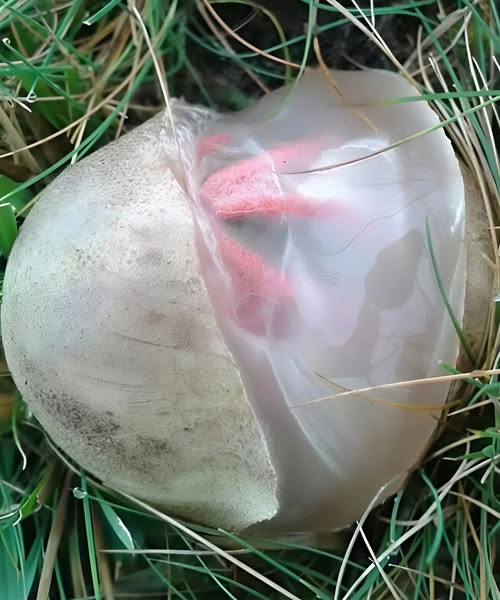It started like any other quiet morning. I stepped outside with my watering can, ready to tend to the flowers and check if the cats had made a mess overnight. But the moment I opened the gate, a foul odor hit me so hard I nearly dropped the can. The air felt thick—metallic, sour, and strangely heavy.
I paused, trying to figure out where the smell was coming from. Then I saw it.
Lying near the flowerbed, half-hidden among the damp soil, was something unlike anything I’d ever seen.
It was slimy, red, and glistening, as though someone had turned a creature inside out. A sickly stench of decay rose from it—sharp and overwhelming, like rotting meat left too long in the sun. My first thought was that some small animal had died there. But as I looked closer, it moved slightly, quivering in the breeze.
For a moment, I froze. My heart raced. What kind of thing could this be?
Was it an insect larva? A decaying piece of flesh? Or worse—something unnatural, something not from this world?
The imagination runs wild when fear takes over.
Searching for an Answer
I didn’t dare touch it, but curiosity overpowered disgust. Holding my breath, I crouched down and snapped a picture with my phone. The smell was unbearable—I had to step back before my stomach turned.
Once inside, I searched online for “red slimy mushroom that smells like rotting meat.”
Within seconds, the answer appeared on my screen—and it made my skin crawl even more.
The creature in my yard wasn’t a dying animal or something alien. It was something called Anthurus archeri, better known as the Devil’s Fingers.
A Horrifying Beauty of Nature
According to what I found, this strange organism isn’t a creature at all—it’s a fungus. Originally native to Australia and Tasmania, the Devil’s Fingers has spread to Europe, the Americas, and beyond.
It begins life innocently enough, as a small, white, egg-like shape hidden beneath the soil. Then, one day, it bursts open—quite literally—and from it emerge bright red tentacles that unfurl like claws or fingers reaching out from the earth.
Those “fingers” are covered in a foul, slimy coating known as gleba, which emits a powerful stench of decay. It’s nature’s way of luring flies and other insects. The insects come, attracted by the smell of carrion, and carry the mushroom’s spores away—helping it reproduce.
That’s right: the smell is intentional. The fungus mimics the odor of rotting flesh to trick the very creatures that help it survive.
What a grotesque kind of genius nature can have.
The Reactions of Those Who See It
It turns out I’m not the first person to be terrified by the sight of it. People across the world have mistaken the Devil’s Fingers for something far more sinister. Some have called emergency services, convinced they’ve found an animal corpse—or worse, human remains. Others have shared photos online, certain they’ve discovered an alien species.
But every time, the explanation is the same: it’s just a mushroom. A living thing, but not one that means harm. Its eerie appearance and smell are simply part of its survival strategy.
Even knowing that, I couldn’t bring myself to go near it again.
A Strange Kind of Respect
The next morning, when I went out to water the flowers again, I found myself avoiding that corner of the yard entirely. The Devil’s Fingers was still there, its red limbs curling slightly in the sun, buzzing with curious flies.
I stood a few feet away, oddly fascinated and deeply unsettled at the same time.
In its own way, it was both revolting and remarkable—a reminder that nature doesn’t need to look beautiful to be extraordinary. It can be grotesque, unsettling, even horrifying—and still serve a purpose.
So I decided to leave it alone.
That patch of earth now belongs to it. I water the flowers from a distance, careful not to disturb what I’ve come to think of as “the gift from the devil.”
Sometimes, late in the afternoon when the light hits the ground just right, I can still see a hint of red glistening between the blades of grass. And I’m reminded that even in the most familiar places—our own backyards—nature still has the power to surprise us, frighten us, and humble us all at once.



